Winter can take its toll on the general health of your chickens, so now’s a great time to take a step back and assess what’s what.

Although chickens are generally remarkably hardy creatures, the cumulative effects of the winter months can have a debilitating effect on their general health and welfare, especially if husbandry routines have been allowed to slip.
The less-forgiving weather conditions will tend to expose weaknesses that may well have gone unnoticed during the kinder, summer months. Birds with underlying medical conditions can take a turn for the worse when the weather gets cold, wet and windy, and this can also highlight hen house and run-related deficiencies too.
Of course, the current AI-related restrictions are playing right into the hands of disease and infection. Birds that are confined to a much smaller area that they’re used to, are likely to be experiencing increased levels of stress which, in turn, will be placing extra loading on their natural immune systems. This, unfortunately, will make them more susceptible to problems.
So it’s now more important than ever for chicken keepers to be aware of the potential for trouble, and to be re-doubling the levels of care and attention they’re giving their birds.
Look and learn
As we always say, observation is the key, and never more so than at this time of year. Spending time simply watching your birds as they go about their everyday business should be part of everyone's good husbandry routine.
You can learn so much from straightforward looking; keeping an eye out for unusual behaviour and assessing the general group dynamic. Being aware of slight differences in activity or appearance, can give valuable clues about the early onset of trouble, which is very important in terms of nipping problems in the bud.
Esta historia es de la edición Spring 2017 de Practical Poultry.
Comience su prueba gratuita de Magzter GOLD de 7 días para acceder a miles de historias premium seleccionadas y a más de 9,000 revistas y periódicos.
Ya eres suscriptor ? Conectar
Esta historia es de la edición Spring 2017 de Practical Poultry.
Comience su prueba gratuita de Magzter GOLD de 7 días para acceder a miles de historias premium seleccionadas y a más de 9,000 revistas y periódicos.
Ya eres suscriptor? Conectar
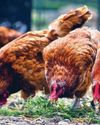
Growing food for Chickens
Mary Larham explores some crops to grow on your holding…
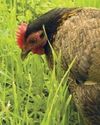
Poultry in the garden – the truth!
Jo-Jane Buxton shares her experiences

The British Waterfowl Association
Which came first, the goose or the egg?

WHY FIT A FAN IN AN INCUBATOR?
Brinsea Products, the Incubation Specialists explain the difference between still air and forced draught
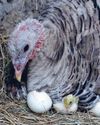
Incubating turkey eggs
Janice Houghton-Wallace looks at broody turkeys and artificial incubation

Chicken nesting box herbs
Diana Clauss owns The Blue Feather Farm, in St Cloud, Florida, home to chickens, ducks, goats, and Anatolian Shepherd dogs.
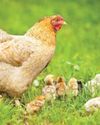
Incubate in January?
Jessica Wombwell says plan the breeding
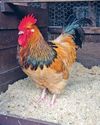
Andy's DIARY
Andy emphases the importance of keeping out damp and wet but allowing ventilation even in cold weather

Feeding for Breeding
It may be winter, but as Joanna Palmer, nutritionist for Smallholder Range explains, now’s the time to get your flock in tiptop shape and plan ahead for a successful breeding season next spring.

A chick named Cuckoo raised by a duck!
Chris Hammacott and her husband live on a small croft in the Outer Hebrides, they keep a ‘no kill’ flock or rare and rescue sheep which they use to spin and weave rugs. They also share the 8 acres with hens, ducks, cats and 9 rescue pugs.